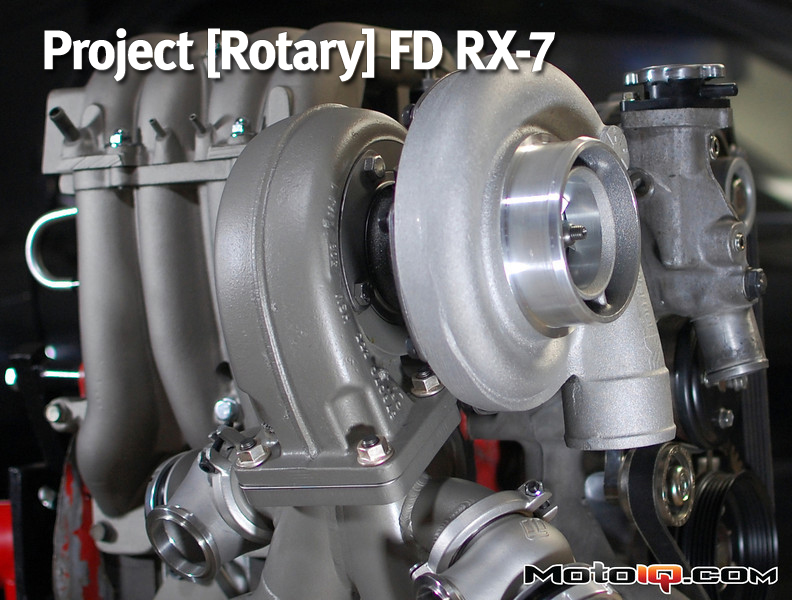,
It's nice to be able to buy off the shelf items, but sometimes that just isn't possible and custom fabrication is required. This is true with most custom turbo setups because there are usually custom downpipes, wastegate tubing, and oil/coolant/vacuum plumbing that need to be fabricated as well. Since this build falls into this category, the best place to start is with the air exiting the turbo and wastegates.
Originally there were two ideas of how to design the exhaust system for this build, use the old (and extremely loud) 4″ system and modify it so the wastegates plumb back into the downpipe or just start new and make a 3.5″ system with atmospheric wastegate dumps. Both scenarios should flow similarly at peak power, but there are trade-offs associated with each. The 4″ system would definitely be louder when the wastegates are closed, but as soon as they open the 3.5″ system would take that crown. Don't get me wrong, I love open wastegates and historically have run them exclusively, but this thing really needs to be quieter than it was previously. So after much mental debate (and a bit of cost analysis) the decision was made to keep and modify the existing 4″ exhaust system.
The old system that is being modified was a full 4″ turbo-back exhaust with a 300-cell catalytic converter, straight through muffler, and Tial 46mm wastegate dumped to atmosphere. To keep the 4″ system, save some money, and make the car quieter some things had to change. Most importantly, the downpipe needed to be modified to get to the new turbo location and the wastegates needed to be plumbed back into the downpipe. The muffler also needed to be replaced with something a bit quieter and the 300-cell metal matrix catalytic converter from Random Technologies needed to remain in place for “street legal” reasons, but we'll cover that after the turbo specific parts.

This 4″ downpipe is a modification of the downpipe from the original build. The new section of tubing was added to get to the new turbo position. Once this is finish welded, it will be time to start on the wastegate plumbing.
 Welding up the wastegate outlet tubes here. Bellows (flex sections) from Vibrant Performance are welded to the tubes to handle any thermal expansion, vibration, and small alignment issues. The short tube is finish welded while the long tube is only tacked. The blue tape on the ends is for backpurging the tube with shielding gas (argon) during welding. This prevents oxidation and poor surface quality on the back side of the weld commonly called “sugaring.”
Welding up the wastegate outlet tubes here. Bellows (flex sections) from Vibrant Performance are welded to the tubes to handle any thermal expansion, vibration, and small alignment issues. The short tube is finish welded while the long tube is only tacked. The blue tape on the ends is for backpurging the tube with shielding gas (argon) during welding. This prevents oxidation and poor surface quality on the back side of the weld commonly called “sugaring.”  Many hours of cutting, grinding, and welding later and we have a downpipe with plumbed wastegates. This was my first time replumbing wastegates and let me tell you, it was no walk in the park. It truly gives you perspective on the skill of the fabricators out there who do this every day and make it look like art. Notice that in the previous picture that there was no v-band assembly on the long wastegate oulet tube. This was added after finding out there was no way to install the downpipe with such a long tube welded to it.
Many hours of cutting, grinding, and welding later and we have a downpipe with plumbed wastegates. This was my first time replumbing wastegates and let me tell you, it was no walk in the park. It truly gives you perspective on the skill of the fabricators out there who do this every day and make it look like art. Notice that in the previous picture that there was no v-band assembly on the long wastegate oulet tube. This was added after finding out there was no way to install the downpipe with such a long tube welded to it. Shot of the downpipe and wastegate dump tubes assembled to the engine with the engine sitting in the car. The downpipe isn't as close to the intake manifold as it looks in this picture, but it is still close enough that some thermal wrap or coating is probably a good idea.
Shot of the downpipe and wastegate dump tubes assembled to the engine with the engine sitting in the car. The downpipe isn't as close to the intake manifold as it looks in this picture, but it is still close enough that some thermal wrap or coating is probably a good idea. The wastegate plumbing and downpipe from the bottom of the car. Notice that there is still plenty of room with the wastegate plumbing for EGT sensors to be installed to the manifold.
The wastegate plumbing and downpipe from the bottom of the car. Notice that there is still plenty of room with the wastegate plumbing for EGT sensors to be installed to the manifold. Last shot is of the engine back out of the car on the engine stand with the manifold, turbo, wastegates, and downpipe fully assembled. It's nice when everything finally comes together.
Last shot is of the engine back out of the car on the engine stand with the manifold, turbo, wastegates, and downpipe fully assembled. It's nice when everything finally comes together.


